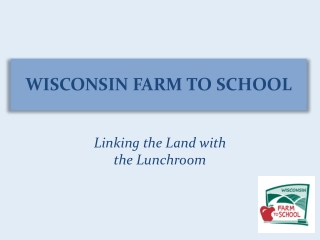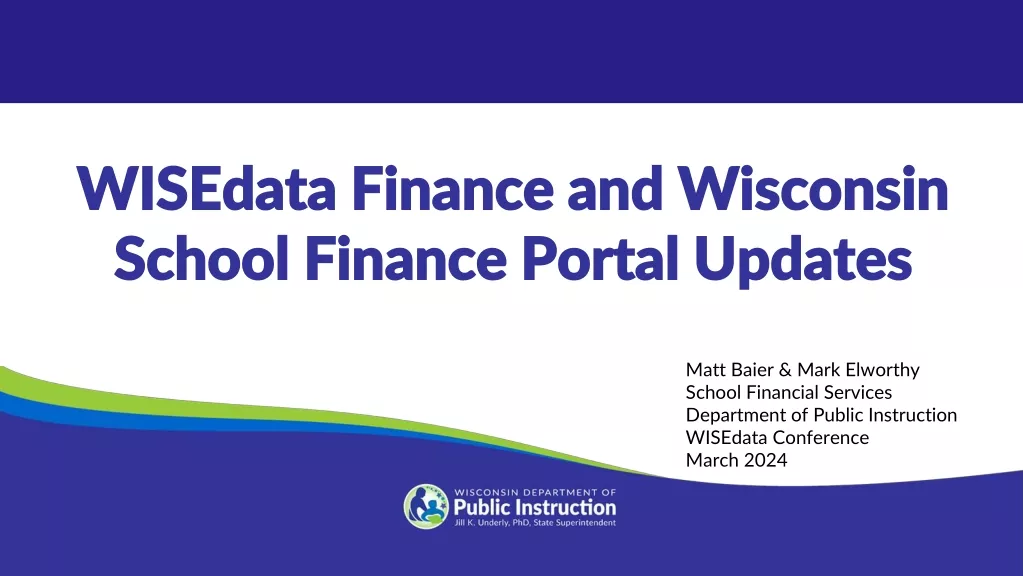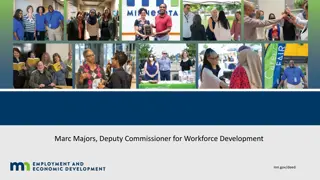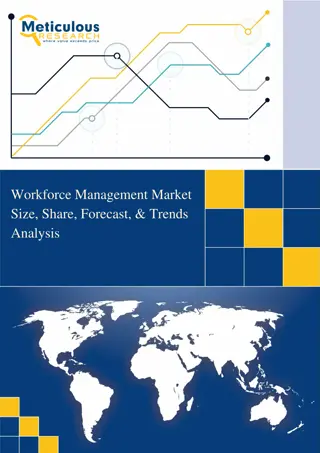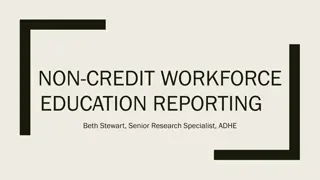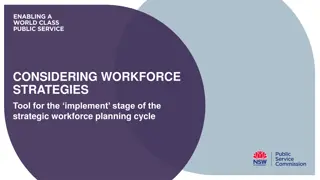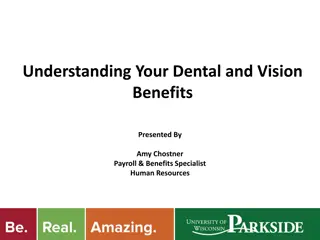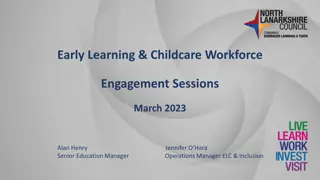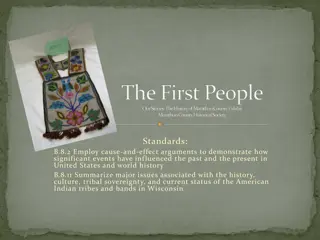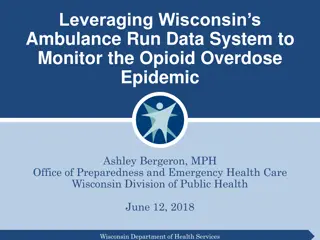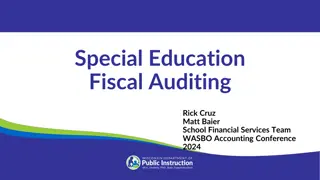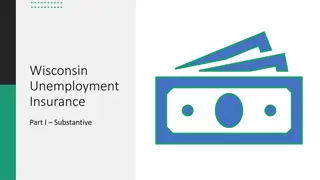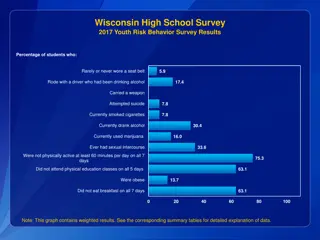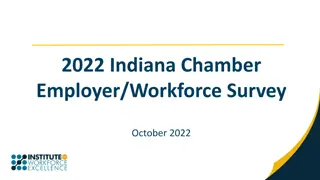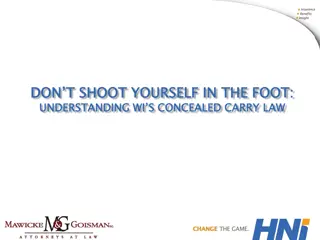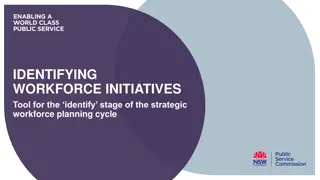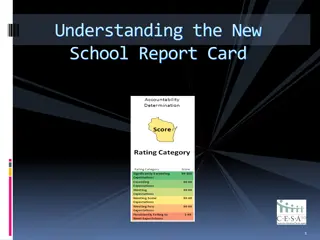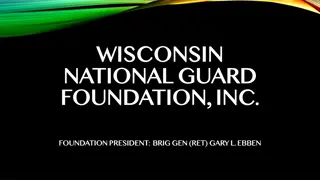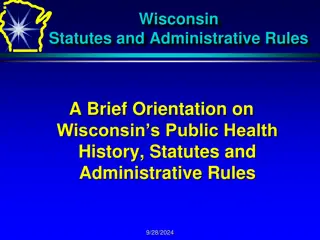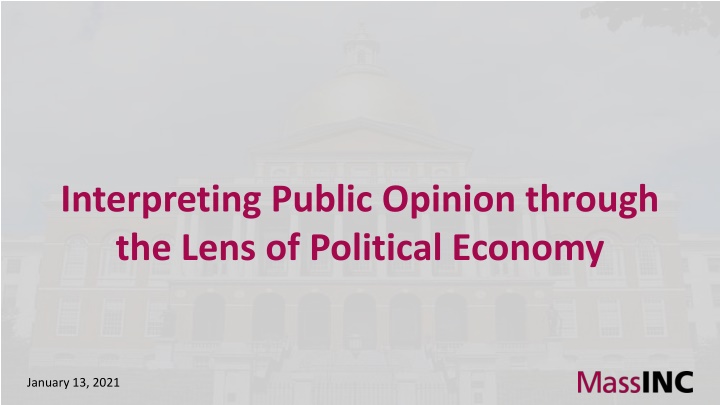
Wisconsin Economy & Workforce Trends
The data highlights concerning statistics about the current state of the economy and workforce trends in Wisconsin. It covers the shortage of skilled workers, workforce demographics shifting towards millennials, rising cost of living, unemployment rates, and declining birth rates. The information provided reflects the challenges and opportunities faced by the region in terms of labor and economic dynamics.
Download Presentation

Please find below an Image/Link to download the presentation.
The content on the website is provided AS IS for your information and personal use only. It may not be sold, licensed, or shared on other websites without obtaining consent from the author. If you encounter any issues during the download, it is possible that the publisher has removed the file from their server.
You are allowed to download the files provided on this website for personal or commercial use, subject to the condition that they are used lawfully. All files are the property of their respective owners.
The content on the website is provided AS IS for your information and personal use only. It may not be sold, licensed, or shared on other websites without obtaining consent from the author.
E N D
Presentation Transcript
Interpreting Public Opinion through the Lens of Political Economy January 13, 2021
Finding #1 The demand for redistribution increases when the income distribution skews to the right.
Massachusetts has one of the widest economic divides in the US. Source: Economic Policy Institute
Massachusetts is increasingly redistributing income through health expenditure. Medicaid spending as a share of state s own-source revenues 22% 15% 2000 2002 2004 2006 2008 2010 2012 2014 2016 Source: Urban Institute
Finding #2 Means-tested programs do not reduce poverty.
Progressive spending increases the share of resources received by those most in need, but reduces the total amount of social spending 180 Trends in state spending by category (indexed to FY01) 160 148 Education 140 Environment & Recreation 120 100 Health 81 80 Human Services 60 Infrastructure, Housing & Economic Development Law & Public Safety 40 20 Local Aid 0 FY01 FY03 FY05 FY07 FY09 FY11 FY13 FY15 FY17 FY19 Source: Massachusetts Budget and Policy Center
Finding #3 Public perceptions about access to opportunity heavily influence attitudes about redistribution.
Economic inequality leads to greater economic segregation. Share of residents living in middle-income neighborhoods by metro area 1990 2007 68% 66% 65% 58% 55% 47% 42% 40% Boston New Bedford Springfield Worcester Source: B. Forman & C. Koch. Geographic Segregation: The Role of Income Inequality. Communities & Banking (Fall 2012).
Perceptions about access to opportunity heavily influence public attitudes about redistribution. Source: Pappay et al (2020)
Finding #4 Inequality is self-correcting in a democracy.
Access to reliable information about state and local policy to hold government accountable is steadily declining (and increasingly behind a pay wall). Newspaper Employment in Massachusetts
Competitive elections and party competition has fallen. Percent of seats contested in primary election Democratic Primary Republican Primary Source: MassINC s analysis
Elected officials do not represent our diversity. People of Color as a Share of: Source: Authors analysis of data from National Conference of State Legislatures and US Census Bureau
Finding #5 In economies with high requirements for skilled labor and rapid industrial change, businesses often side with labor.
Massachusetts already has a relatively high corporate tax burden. State Rank (1=lowest burden) 38 50 44 11 Category Corporate Tax Unemployment Insurance Property Taxes Personal Income Taxes Source: Tax Foundation
1. Double-down on efforts to generate more sustainable development patterns. 2. Take advantage of this opening to rebuild leadership in the business community. 3. Tackle the structural challenges that undermine the health of state and local democracy.

